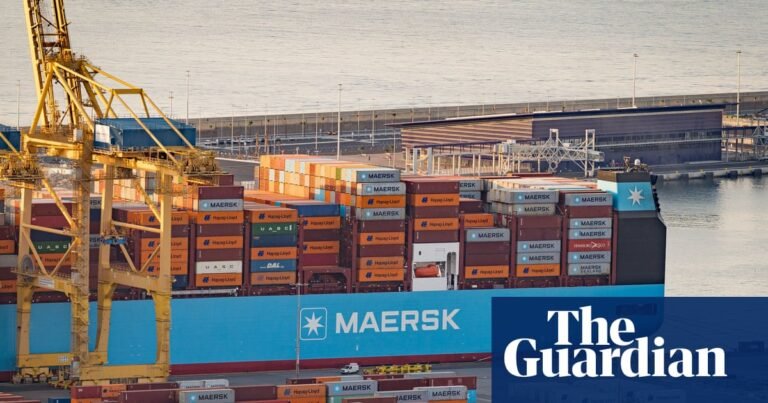The EU and the US are nearing a trade deal that would place 15% tariffs on most imports from the bloc, it has emerged.
The tariff rate, which would mirror a deal struck this week between the US and Japan, would apply to most goods, with some exceptions for products including aircraft and medical devices, according to diplomats with knowledge of the talks.
Member states were briefed on the latest developments by the European Commission on Wednesday afternoon.
To extract a better deal, the EU has also offered to reduce its so-called “most-favoured-nation rate” – currently at an average of 4.8% – to zero for some products as part of an agreement in principle, a diplomat said.
The final decision remains in the hands of the US president, Donald Trump, but if agreed it would mean the EU gets a worse deal than the UK, which has agreed a 10% baseline tariff.
It would also be a hard pill to swallow for the German car industry, whose tariffs would be reduced from 27.5% but would still be more than five times the 2.75% import duty they faced on exports to the US before Trump returned to the White House.
Although exemptions would have to be finalised, it is understood that alcoholic spirits are also under consideration to be further reduced or removed, which would be a win for whiskey and cognac exporters in the EU and bourbon exporters in the US.
Sources also said a 15% tariff would include the most-favoured nation tariff and would not be stacked on top of existing import duties faced by various sectors.
Discussion about any possible trade deals with the US should be considered “speculation,” unless they are announced byTrump, White House spokesman Kush Desai said on Wednesday.
At the same time as the talks, the EU is hardening its retaliatory measures in the event Trump does not sign the deal, which would amount to a baseline tariff at half the 30% rate he threatened 10 days ago.
On Wednesday the EU threatened to impose nearly €100bn (£87bn) worth of tariffs on US imports ranging from bourbon to Boeing aircraft in one fell swoop if the US president walks away from the latest proposal.
Diplomatic sources have said the rate would be set at 30% to match that of Trump’s threat with a vote at the European council trade barriers committee tomorrow.
At the same time EU diplomats discussed using the “nuclear deterrent”, a new law known as the anti-coercion instrument, which could allow the bloc to impose tariffs, but also ban US services which would hit the tech industry hard. It could take a year to implement.
Sources say, however, that France was the only country that called for the immediate implementation of the instrument, arguing it had to demonstrate it was tough.
skip past newsletter promotion
Sign up to This is Europe
The most pressing stories and debates for Europeans – from identity to economics to the environment
Privacy Notice: Newsletters may contain info about charities, online ads, and content funded by outside parties. For more information see our Privacy Policy. We use Google reCaptcha to protect our website and the Google Privacy Policy and Terms of Service apply.
after newsletter promotion
The European Commission said on Wednesday it planned to combine two previously prepared lists of US goods to be included in any retaliatory moves against the US president’s border taxes.
If Brussels follows through on the threat, it would mean tariffs would be imposed on US imports to the EU from the first €21bn list, which includes poultry and alcohol, as well as the more recent list of €72bn of goods, which features cars and planes.
If agreed by EU member states, through a vote expected in the coming days, the €93bn of counter-tariffs could be imposed from 7 August.
“The EU’s primary focus is on achieving a negotiated outcome with the US,” said Olof Gill, a trade spokesperson for the European Commission, adding that it would “continue in parallel to prepare for all outcomes”. To make countermeasures “clearer, simpler and stronger we will merge lists 1 and 2 into a single list”, he said.
Tobias Gehrke, a senior policy fellow at the European Council on Foreign Relations thinktank, said the EU had missed an opportunity by not warning that it would use the ACI after a trade ministers’ summit early last week, two days after Trump sent it a letter threatening 30% tariffs.
“There is a sense that the bloc has fumbled its hand, despite holding decent cards,” he said. “The EU should have immediately retaliated against US tariffs. While the mantra ‘negotiate from a position of strength’ was oft-repeated in speeches, any associated actions never materialised.”
The latest EU move comes before a summit with China on Thursday between the European Commission president, Ursula von der Leyen, the president of the EU council, António Costa, and China’s president, Xi Jinping.
